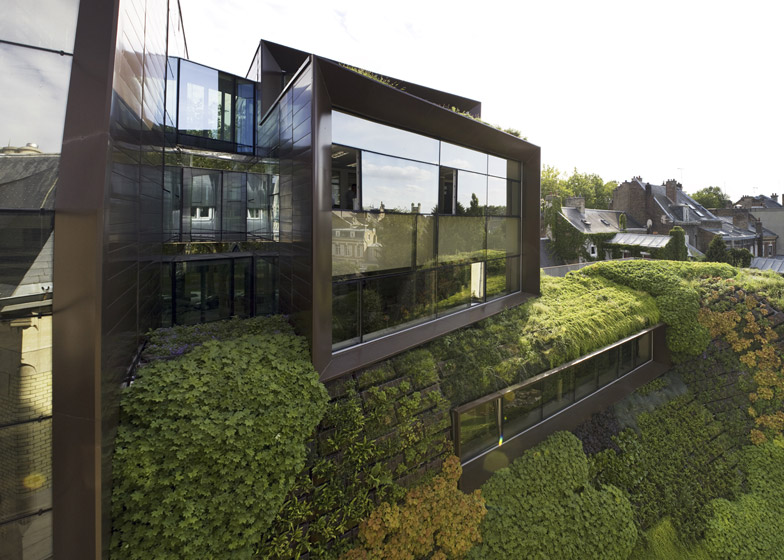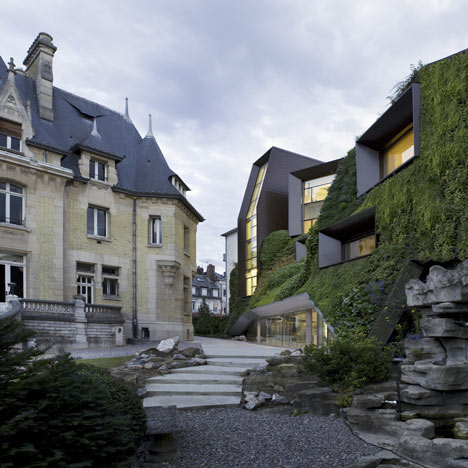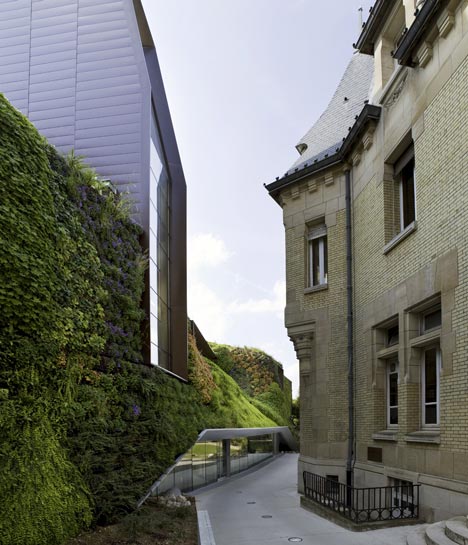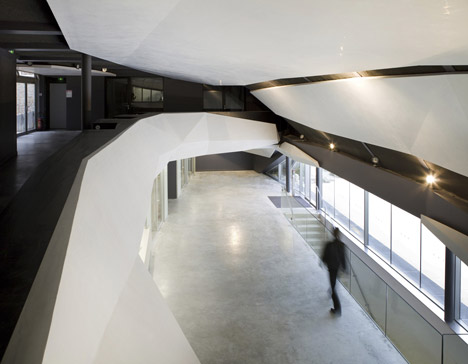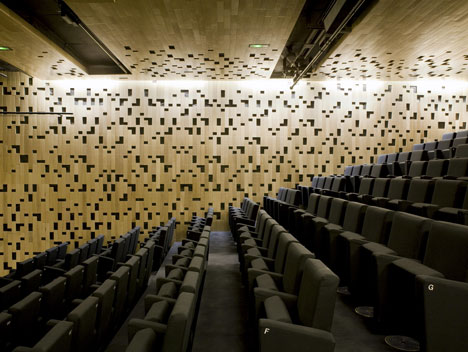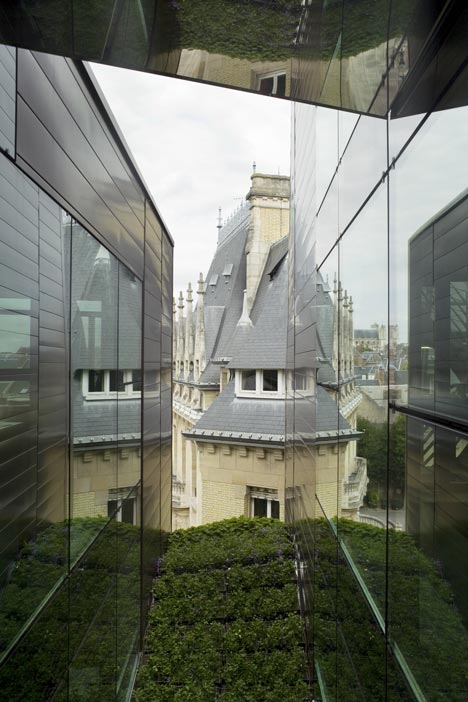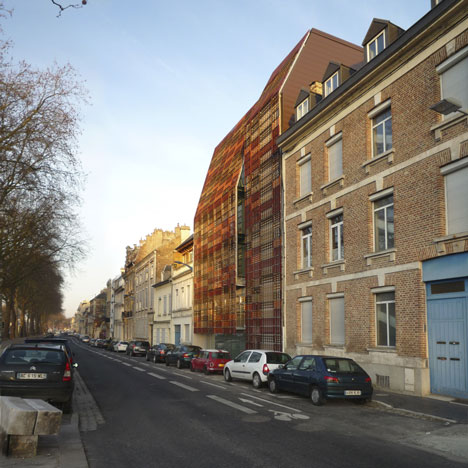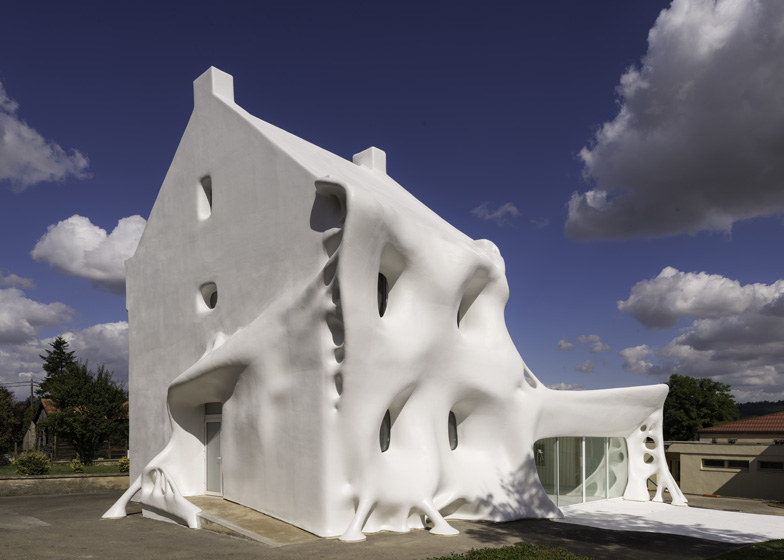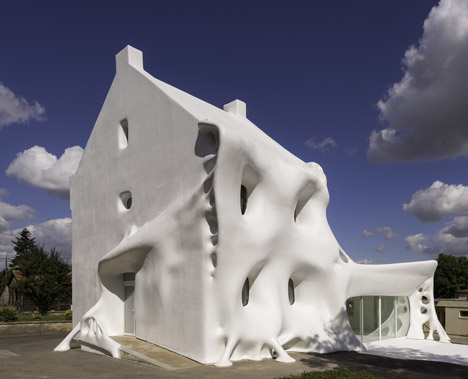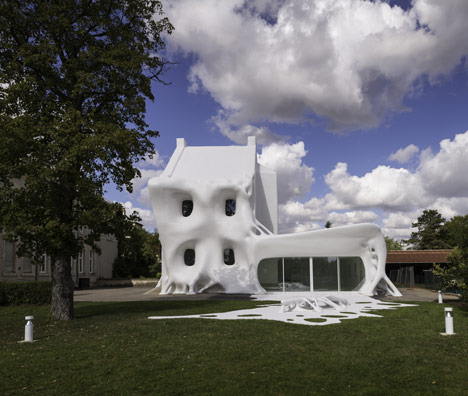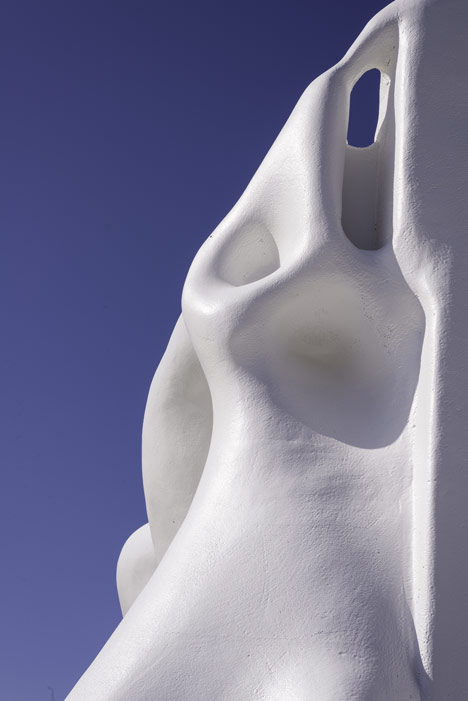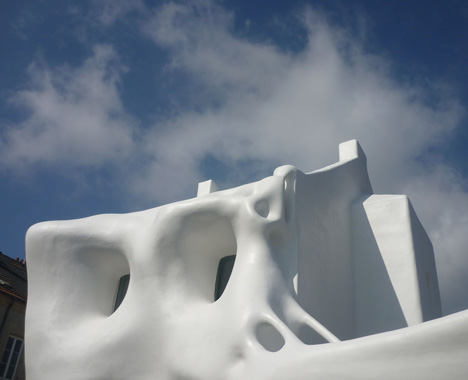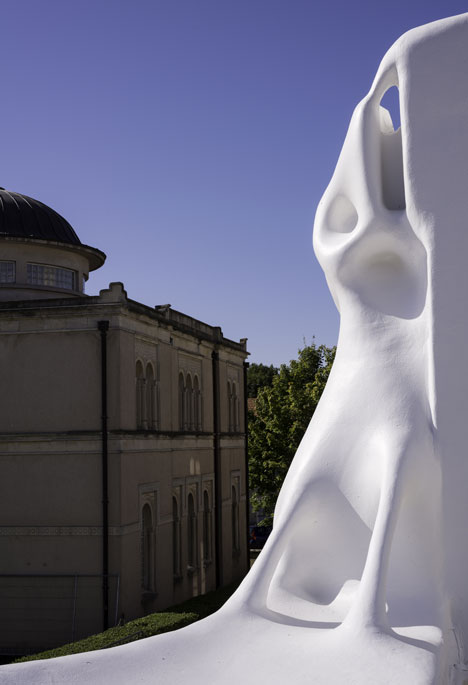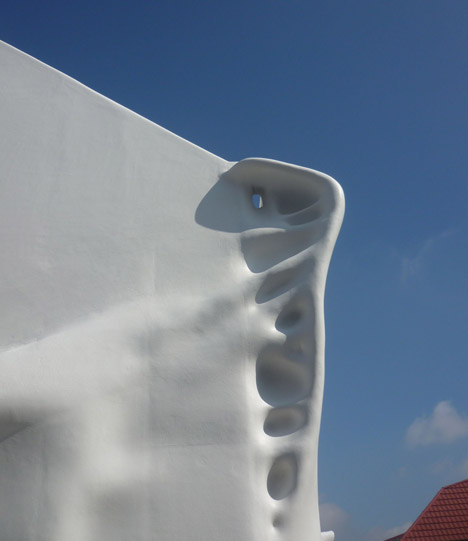French artists Christophe Berdaguer and Marie Péjus have converted an old house in France into a visitor centre by giving it a ghostly cloak of polystyrene and paint.
Blocks of polystyrene create the chunky shapes on the facade, and are covered with resin and a layer of white paint.
The artists imagine the building as a ”ghost-house” and have named it Gue(ho)st House, in reference to the phrase invented by Marcel Duchamp “A GUEST + A HOST = A GHOST”.
Above: photograph is by Marie Le Fort
“Duchamp’s wordplay ended up being a trigger, a base line for drawing up the project,” said Berdaguer and Péjus. “Guest is the common denominator, the sharing space that we imagined. Ghost is a metaphor, a phantasmagoria.”
The completion of the Gue(ho)st House marks the 20th anniversary of the arts centre and provides new reception spaces for visitors, as well as studios for resident artists.
Above: photograph is by Marie Le Fort
Here’s some more information from the Synagogue de Delme contemporary art centre:
The art project and the context of the commission
Christophe Berdaguer and Marie Péjus are creating a remarkable work of architecture-sculpture in the area surrounding the Synagogue de Delme contemporary art centre: by enhancing the art centre’s visibility, by creating new reception spaces for visitors and artists, this work makes it possible to use the public space for new purposes.
The heart of the project is the transformation of an existing building that was once a prison, then a school and then a funeral home. Keeping this context in mind, the artists used the memory of the place and transformed the building into a ghost house, a veritable architectural phantasmagoria, which the title echoes. Gue(ho)st House borrows Marcel Duchamp’s wordplay: a Guest + A Host = A Ghost. This served as a trigger for the project, which offers an interface between hosts (art centre, commune) and guests (visitors, artists).
Berdaguer and Péjus are covering the original house in a white veil that drips onto the surrounding area and creates a living body, a moving form that looks to the past as well as to the future. As the spatial projection of a collective psyche, the house becomes not only a place of emotions, perceptions and memories, but also a great mediation tool for the art centre.
This public commission constitutes a major milestone in the history of the Synagogue de Delme, which has always presented itself as a place where artists can work and research, open to all members of the public, in a spirit of dialogue and proximity. In 2013 the art centre will be celebrating it’s 20th year of operation and will then be able to offer everyone a very a high quality experience.
Future uses
The ground floor of the building will contain a reception centre (for groups and schoolchildren, and for the art centre’s educational events), an information office and a documentation centre. The upper floor will be transformed into a studio that will occasionally provide accommodation to artists, students, interns and other art world professionals.

